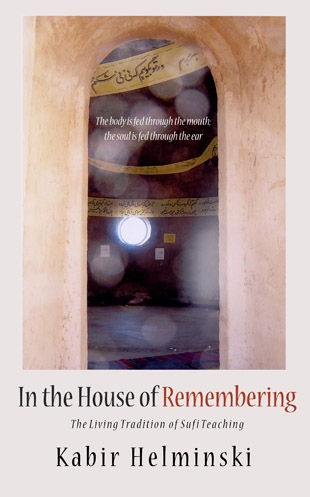Have you ever wondered what happens in a Sufi circle and what teachings are conveyed there? Then this volume is for you. An excellent introduction by Mahmoud Mostafa, a dervish from the Threshold Society in the Mevlevi Order founded by the son of the Persian saint Jelaluddin Rumi, provides a primer on key terms — zhikr (chanting the names of God), ilahis (songs about Divine love and Sufi themes), adab (spiritual comportment), and presence (an inner capacity to consciously witness both the context and the content of experience). He then invites the reader "into the heart of the Theshold Mevlevi circle where you can experience some of the spiritual conversations that have been shared over the years by Shaikh Kabir Helminski with his dervishes."
Full disclosure: We are initiates of the Mevlevi Order and Kabir Helminski is our shaikh. He is profiled in S&P's Living Spiritual Teachers Project, and he has led many of our e-courses. So the teachings in this book are familiar to us, and we can vouch for their ability to touch the heart, expand awareness, and make important and essential connections to a community.
The first essay "What Do We Need a Spiritual Path For?" reminds us of our first encounter in person with Kabir Helminski. It was at a retreat about the poetry of Rumi, and a small group of people new to Sufi teachings were gathered in a circle. Kabir asked "What do you yearn for?" Here is his explanation of why that is a central question from In the House of Remembering:
"First of all, my sense is that people are led to various religions and mystical traditions by a yearning from within. Something in them feels unfulfilled. It's like an inner drive or hunger. It's not, 'I want to follow a religion so I can be a good person.' Or maybe it's more a sense of 'I don't want to just be at home. I want to be together with others. I feel like I need to be in a holy place.' There is something more than just being nice, kind, and all of that. There's a deeper yearning operating within humans who undertake a spiritual practice. There is something else calling us. These things are part of a bigger whole."
Many of the sobhets here explore what it means to be part of that bigger whole and what is necessary to enter into an experiential relationship with the Divine. These talks cover dealing with fear; going through an initiatory process such as fasting; making regular room in our day for a relationship with the Divine; polishing the heart to be a reflection of the Divine; the inner ablution to cleanse oneself of the negative influences of envy, pride, and resentment in order to be ready for prayer and worship; educating the heart; and more practices.
Throughout these talks, Helminski quotes from the Qur'an, the sayings of the Prophet Muhammad, the poetry and discourses of Jelaluddin Rumi, and the writings of other Sufi saints such as Hafez and Ibn Arabi. He also takes up difficult questions such as why certain prayers are not answered and how to dissolve the false self. He explores why we need to be grateful for challenges and difficulties. Defining a dervish, Helminski writes: "A dervish is one who stands on the threshold where two worlds, the finite and the Infinite, the physical and the spiritual, meet." And it is best not to take up this role alone. Community life and spiritual companionship are essential to the Sufi path.
We would call this book a primer on applied spirituality. An important reality of the Sufi path is that it goes through the ordinary events and circumstances of our lives. The goal is to be aware of that. Helminski says, "We can live our lives in such a way and develop to a point where we're more sensitive to those moments when we are present with Divine Spirit. . . . We have to work. We have responsibilities and obligations. However, all of that work can take place within this wider field of remembrance. Within this context we know we're in Love's universe."
